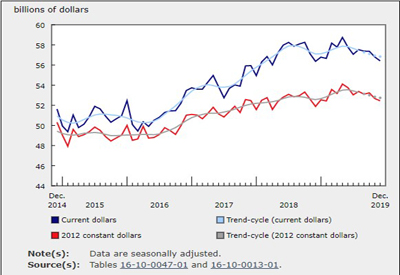4 Ways Industrial Manufacturing Companies Can Recover from COVID-19

July 29, 2020
By Atul Minocha, Dawn Werry, and Kimberly Miller
When the pandemic first hit, the industrial manufacturing sector was changing daily. Now, at the start of the recovery phase, the whole industry is adapting. Some companies have had to find completely new markets for their products, while others have started making completely new products. Across the board, supply chains have been disrupted. Buyer behaviours have changed and go-to-market strategies have had to adjust in order to keep business moving. Here are four ways industrial manufacturing companies can recover from COVID-19:
1. Respond to customer needs
Even in the face of this disruption, some companies have refocused on what was not impacted and moved in a new direction. Many proactively asked how their customers’ businesses were impacted, what new products or components might be needed, and how they could respond as soon as activity picked up again.
In this environment, it’s very important for a company to understand the needs of their customers. It’s equally important for customers to believe that their suppliers care about them and that they are interested in understanding and improving changing situations. Manufacturers have been forced to move from a position of “We sell these products” to “What are the needs of my marketplace?”
2. Get new suppliers
Prior to the disruption caused by the pandemic, industrial companies in North America. were heavily reliant on overseas suppliers. Many companies had ruled out buying from domestic vendors because they could get products from an overseas supplier at a better price. This is no longer a valid assumption as these supply chains have broken and the overseas reliance has shifted.
This creates an opportunity for North American component manufacturers that previously were not able to compete. Buyers are now starting to consider domestic suppliers as a back-up, or even a preference, to those overseas.
3. Evolve your go-to-market strategies
As changes unfold in the manufacturing space, go-to-market strategies have to adapt. Some companies have repurposed their salesforce, others are re-tooling their processes to adapt their products for new applications. This is opening up new markets, whether they are complementary, supplemental, or brand new.
Big changes to marketing strategy also necessitate changes to value propositions. If a company starts making new products, supplying different customers with North American built components, or selling into a brand-new market, their messaging and value propositions need to be updated to reflect changes.
Additionally, buyers in the industrial manufacturing sector have changed their behaviour. They’re not going to trade shows. They’re not allowing a salesperson in the door. Without events and sales calls, companies have to consider alternative ways to engage buyers and suppliers.
Many industrial manufacturers have been slow to adopt modern marketing practices and may only have a basic web presence. This current situation has revealed the importance of digital marketing. Websites are now crucial to clearly communicate a company’s message and value propositions. The website is a substitute for trade shows, product research, education, video demonstrations. Without the ability to meet face to face, customers who respond to outbound messaging, advertising, virtual events, and educational videos are all funnelled back to the website. It is a key tool for engaging and sharing with customers and prospects. As such, a digitally enabled website should be a priority going forward.
4. Have agility, not prediction
Manufacturing CEOs should steer conversations away from guesses about what will happen or when. Instead they must focus on preparing the organization to flex and switch quickly. Windows of opportunity could be missed if CEOs waste time and money trying to predict what’s coming. The future is unknowable. Success in this climate is more about agility and less about prediction.
Now is the time for manufacturers to become receptive to new ideas. This is the moment to pull teams together and say, “All right, let’s look at this business differently. Let’s build a plan. Let’s figure out what levers to pull, when to pull them, and how hard to pull.”
If manufacturers build agility into their organizations going forward, they’ll have a better chance of flexing new strategies into action quickly. What was done in the past may not be adaptable to the new way of doing business, but positive steps taken today will equip businesses to meet tomorrow’s challenges.
Atul Minocha (Partner), Dawn Werry (Partner), and Kimberly Miller are CMOs with Chief Outsiders, a leading fractional CMO firm focused on mid-size company growth. They work with global industrial goods companies to solve seemingly inextricable growth challenges. More information at www.chiefoutsiders.com
Photo by Morning Brew on Unsplash











